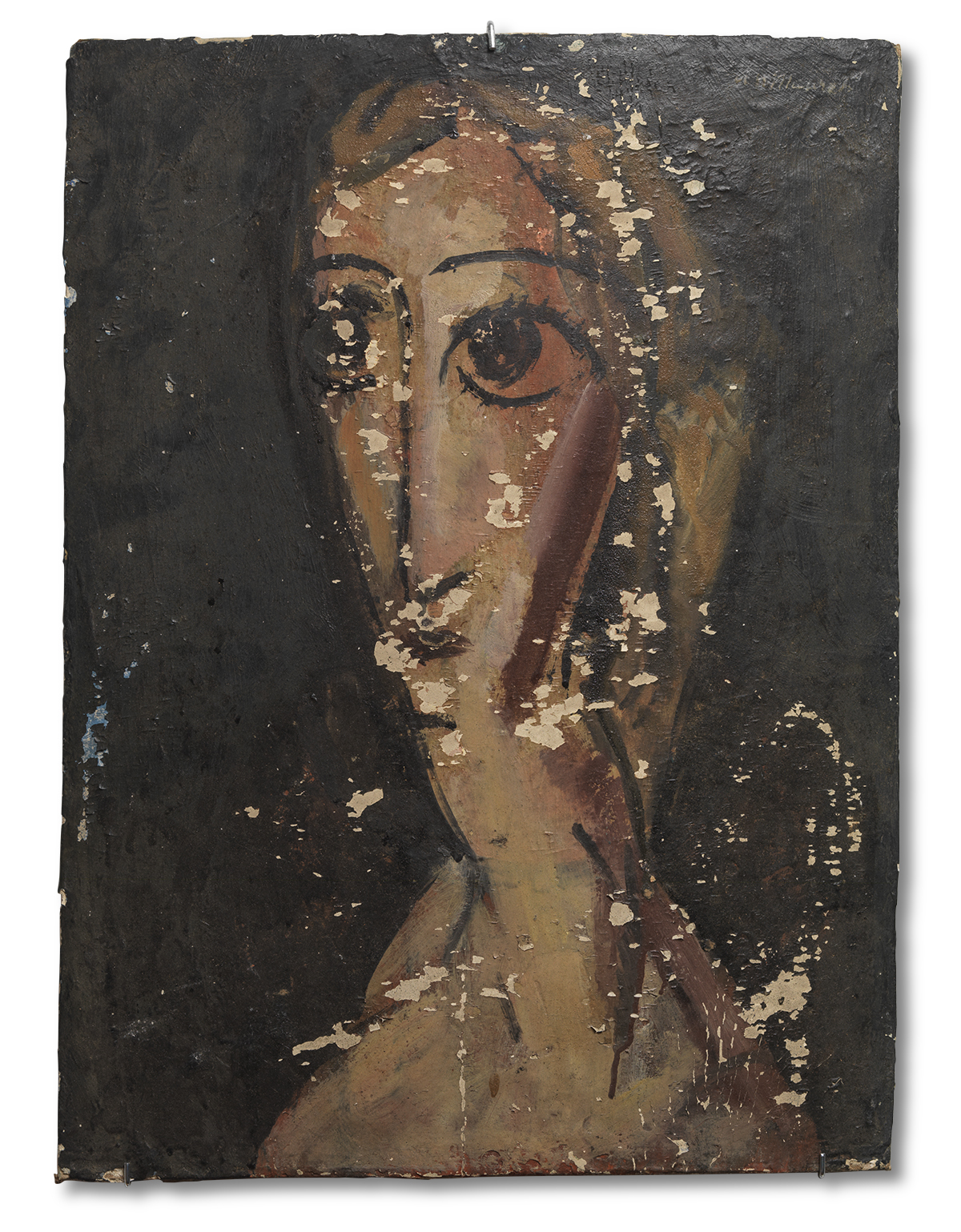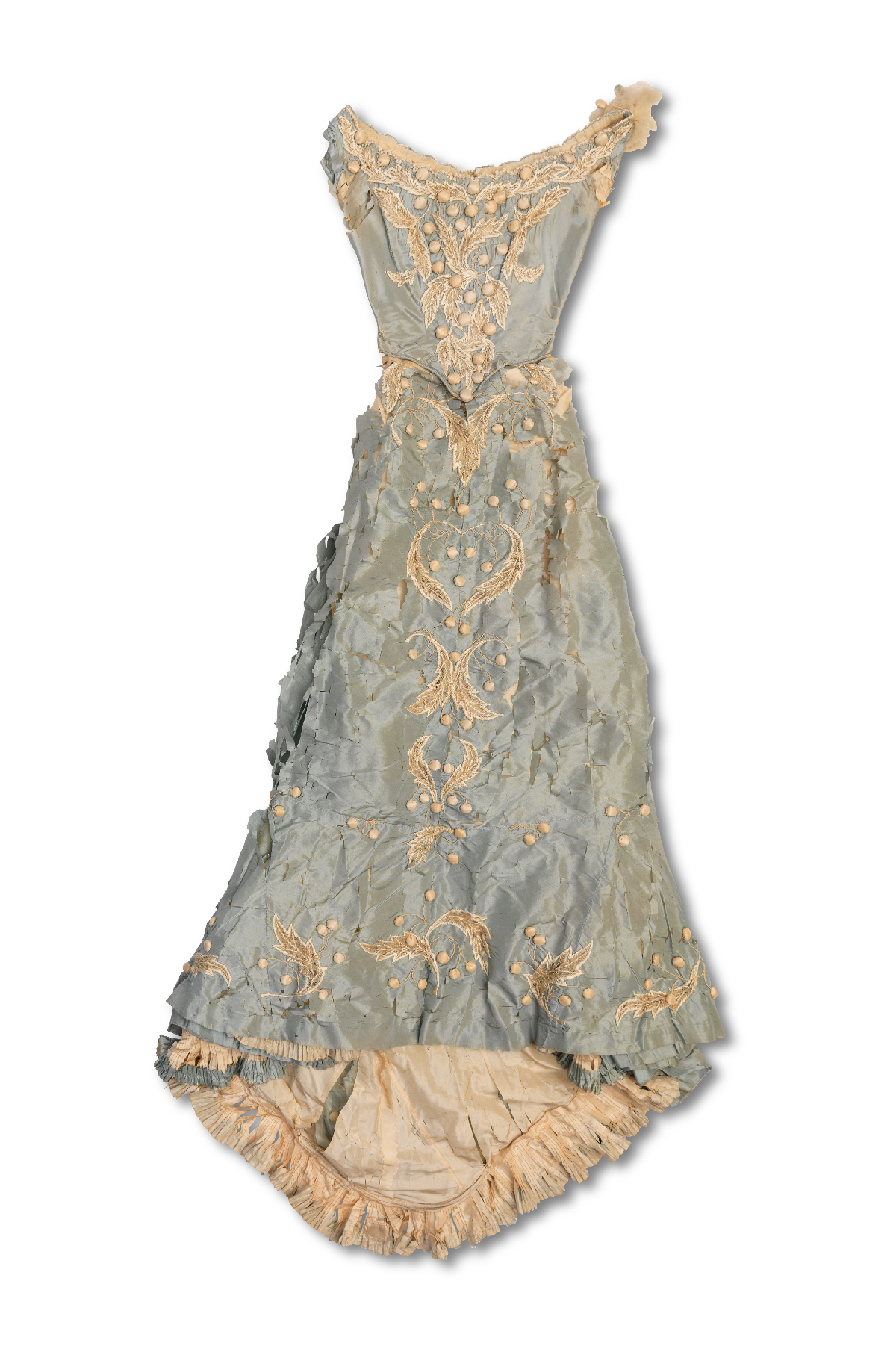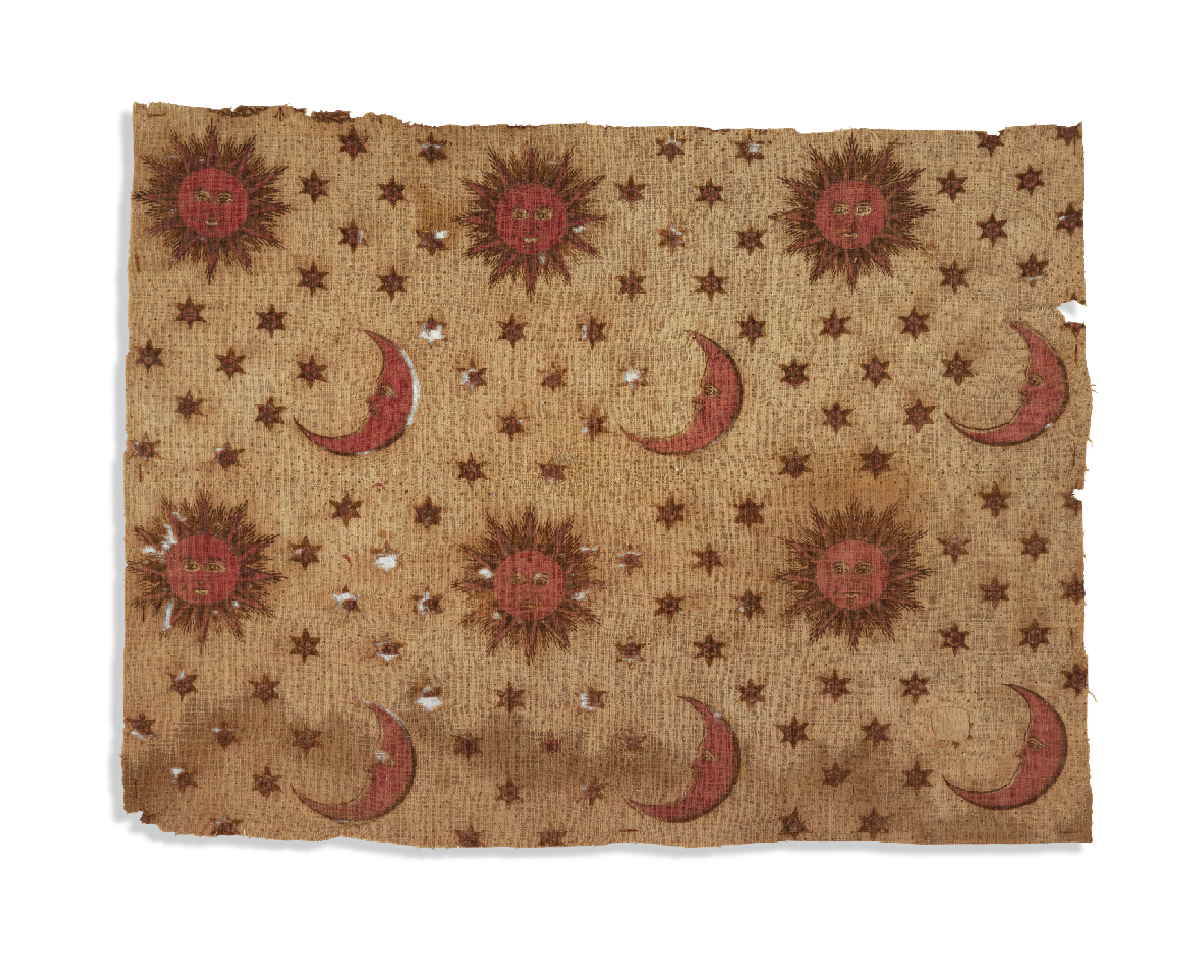Portrait of a Woman
Portrait of a Woman, 19th–20th century
Alfred Henry Maurer (1868–1932)
Oil on gessoed canvas adhered to fiberboard, 16 1/2 × 12 1/8 in. (42 × 31 cm)
Courtesy the Conservation Center, Institute of Fine Arts, New York University, New York City
Paintings and painted surfaces are fundamentally layered structures of different materials. Paint, whether applied on canvas, panel, or any other substrate, is generally composed of three components: pigments that confer color, binders that form a film that adheres to the substrate, and solvents in which the pigments and binders are dispersed. The numerous, disfiguring losses on this painting are the result of flaking between its paint layers, which occurs when the adhesion between them has failed; conservators refer to this as “interlayer cleavage.” A number of factors cause flaking, including the compatibility of materials with one another and the differential responses of the various material layers to changing environmental conditions over time.
See other items in How is Matter Active?








